
Napa and Sonoma Come Back to Life After Fires
Two years after the fires in Napa and Sonoma, California's wine country is bouncing back.

Nearly two years later, it sounds like a folktale: how one man saved cheetahs, giraffes, and other animals from an inferno, with little more than his wits and a garden hose. Tall and hale at 78, with a neatly trimmed white beard and a blunt but amiable manner, Peter Lang insists he's no hero.
"There was nothing else I could have done," he says. But he did have a choice just after 10 p.m. on October 8, 2017, when he and his wife, Nancy, were jolted awake in their Sonoma County home, about an hour north of San Francisco. The ridge behind them was burning. Wildfires were raging across wine country, conflagrations that would eventually claim more lives and property than any previous fires in California history.
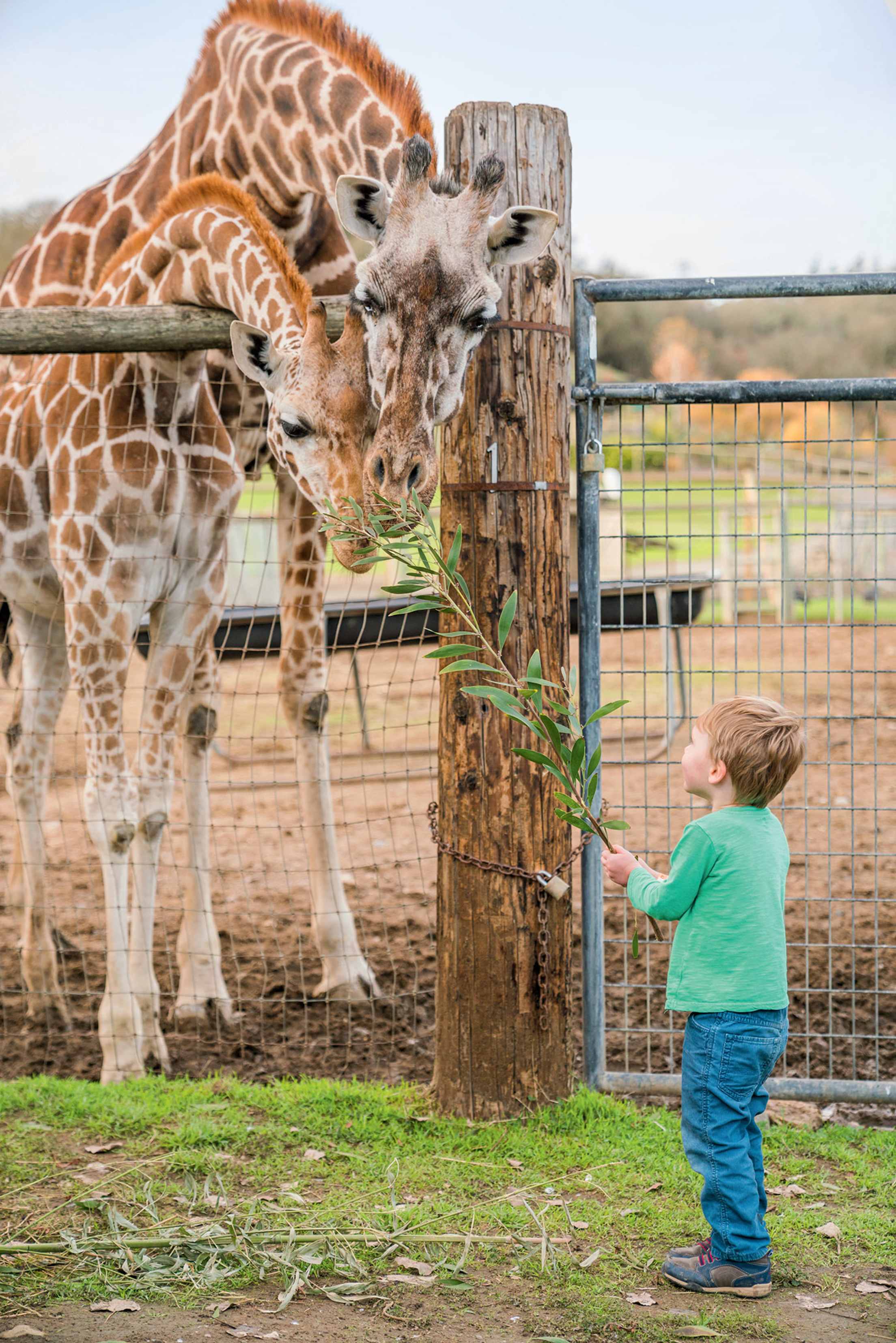
A young visitor at the reopened Safari West feeds the giraffes.
Nancy jumped into her car with the couple's three dogs, Peter got in his truck, and they hustled toward Safari West, the 400-acre private wildlife preserve the Langs run in the scrub oak–dotted foothills of Santa Rosa. There, more than 1,000 animals, in their enclosures and pastures, were directly in the fire's path.
Through a night that glowed like an eerie orange sunrise, Nancy helped evacuate guests while Peter defended the property. When fire licked close to the giraffe barn, he used a forklift to move a pile of fence posts that could have served as kindling. When flames cornered a group of nyala antelope, he herded the largest male to a space that wasn't immediately threatened so the rest would follow. Using a network of garden hoses, he doused the ground wherever it was needed most and stamped out embers with his boots.
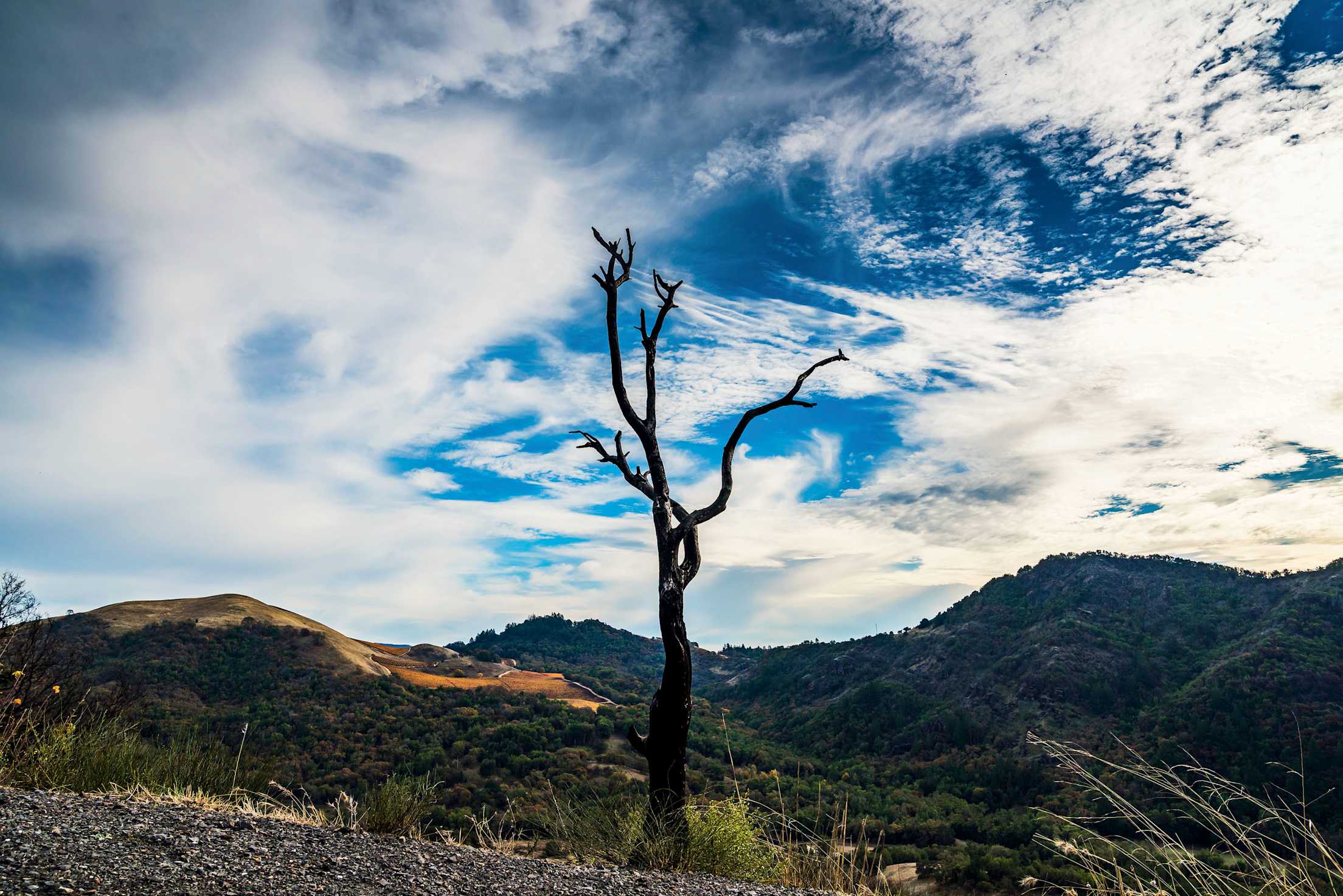
Next to Bald Mountain Trail at Sugarloaf Ridge State Park, reminders of the fires remain.
When morning broke, the earth was scorched. Small structures and fences were toppled, the netting on an aviary singed. Nearby, the Langs' home lay in ruins. But not a single animal had been harmed.
Just over a month later, around Thanksgiving, Safari West reopened for visitors. Four months after that, guests were once again bunking in luxury tent cabins and embarking on safaris for close-up encounters with the menagerie of mostly African species. Today, with the anniversary of the wildfires approaching, there's little sign—aside from a smattering of blackened tree trunks—that life at the preserve had ever been threatened.
In that respect, Safari West's trial by fire reflects the fortunes of a region that, when faced with nature's fury, showed its own best nature in response.
"The morning after the fires, Nancy and I immediately agreed that any days spent bemoaning our fate were wasted, that our energy would be focused on moving forward and rebuilding," Lang says.
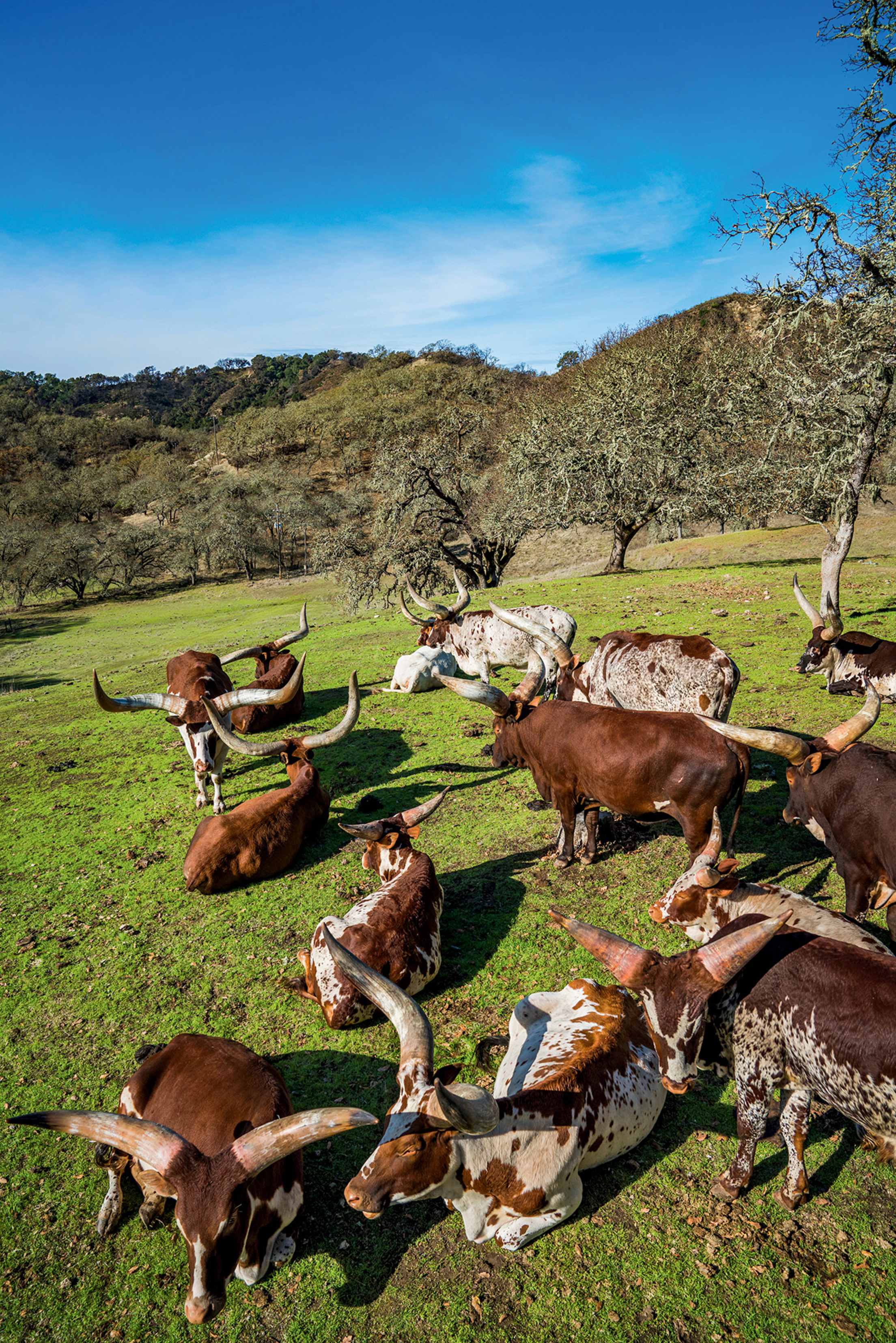
Watusi cattle take a break at Safari West.
Of course, there's no minimizing the devastation. Sparked by electrical wires and propelled by swirling winds, the constellation of blazes collectively referred to as the Wine Country Fires rampaged for more than three weeks across seven Northern California counties, stretching hundreds of miles from the hearts of Napa and Sonoma to the northern reaches of the Mendocino coast. Forty-four people died, and almost 200 others were hospitalized.
Nearly 9,000 homes and businesses were lost to the flames. The economic toll was estimated at over $14 billion. The emotional costs were immeasurable.
Like other major conflagrations that have burned in Northern California since the fall of 2017, including the Carr Fire near Redding the summer of 2018, and the Camp Fire, which tore through Butte County at the foot of the Sierra a few months later, the Wine Country Fires left marks that won't soon fade or be forgotten. But in the months that followed, even hard-hit areas began to bounce back.
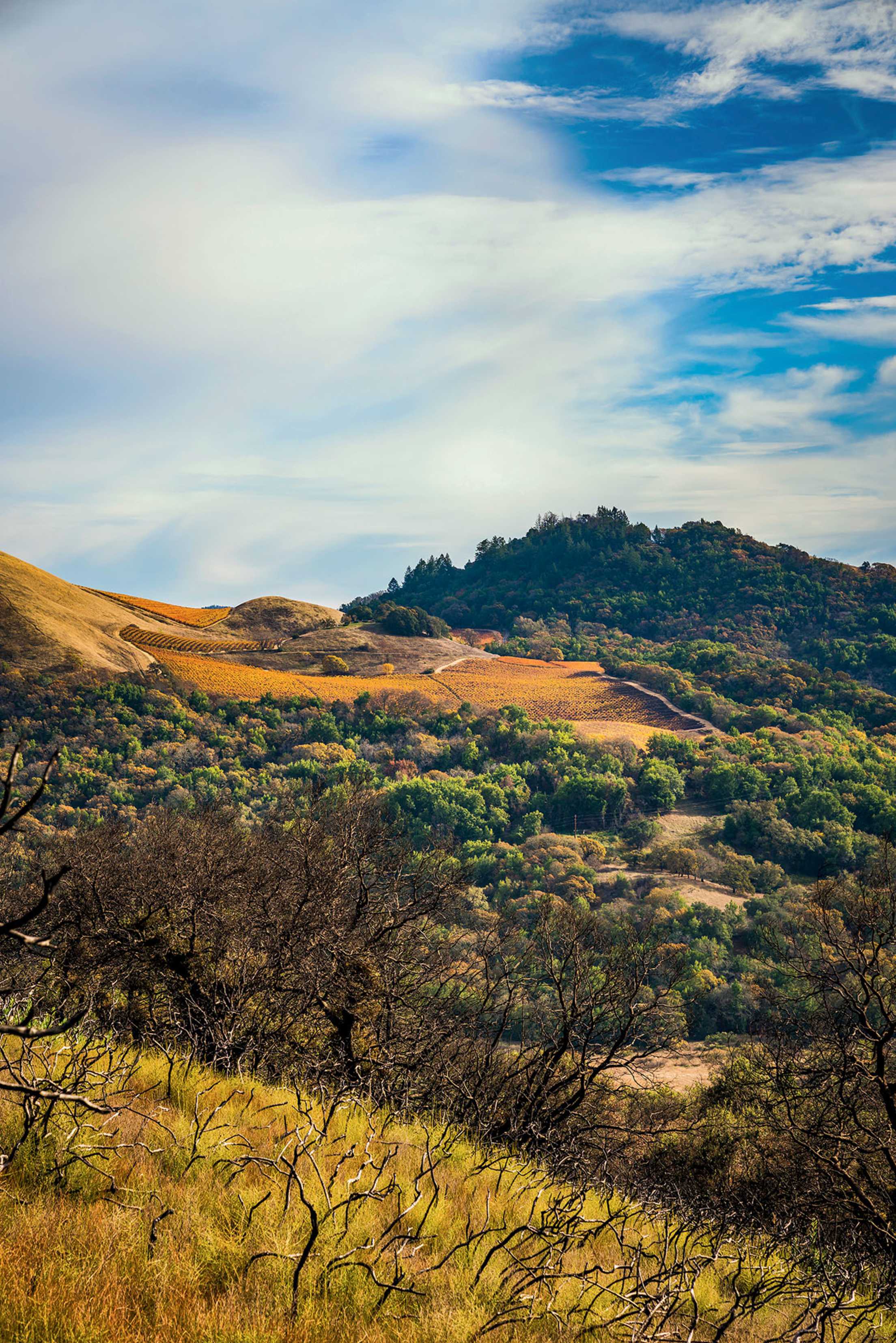
Burned chaparral at Sugarloaf Ridge State Park contrasts with untouched land.
In Napa County, the fires burned mostly on the forested hillsides, leaving the heavily visited tourist corridor down on the valley floor largely unscathed. No hotels burned. Several wineries were severely damaged, but most weren't and reopened within days.
West of Napa, in Sonoma County, where the fires unleashed their greatest wrath and reduced entire sub-divisions to rubble, the aftereffects are still dramatic. Early estimates suggest that since July 2018, more than 2,000 people have opted to leave the county—the greatest exodus from any one county in the state in that time.
But the extent of the rebuilding is striking, too. Though three Sonoma County hotels were destroyed, the opening of new ones and the expansion of others has brought the area's guest room count to more than 6,000—roughly the same as its prefire total. Several restaurants in Santa Rosa burned, but two—Sweet T's, a popular Southern-style place, and Willi's Wine Bar, a much-lauded local haunt—have since reopened (though Sweet T's had to relocate to nearby Windsor).
The area is slowly but surely returning as the wine country that travelers from around the world know and love.
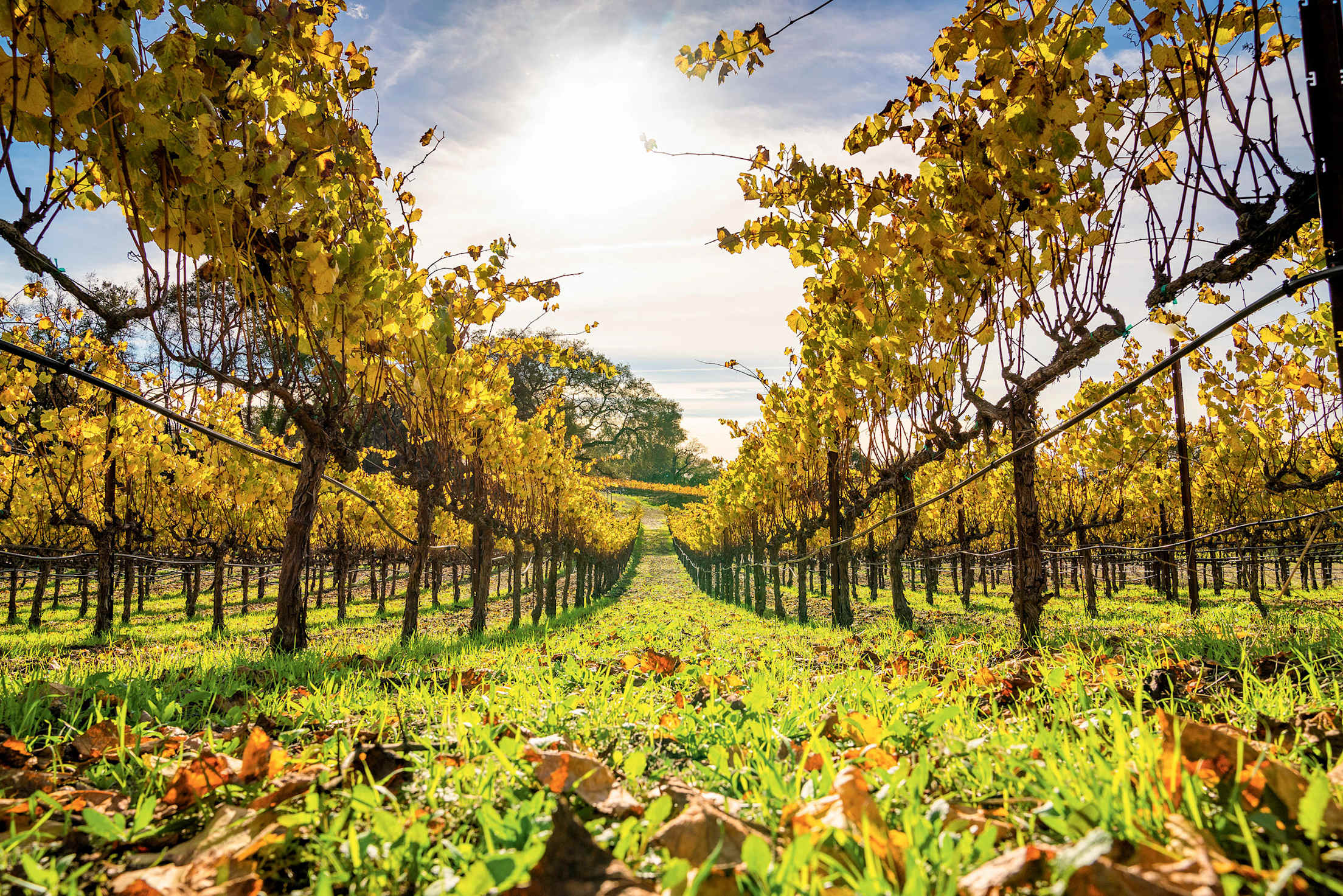
Rows of chardonnay grapes line Nagasawa Vineyard at Paradise Ridge.
Nature on the Rebound
That revitalization owes much to human efforts like the Langs'. But the land itself has also played a healing role. State parks across the region, a number of which were singed, have all reopened, though some areas remain off-limits.
"The fires were a terrible human tragedy," says Caitlin Cornwall, a planning and partnerships adviser with the Sonoma Ecology Center, a nonprofit whose mission includes the stewardship of Sonoma's open spaces. "But they were not necessarily a natural disaster."
It's a sunny afternoon, and we're hiking through a sylvan stretch of Sugarloaf Ridge State Park, a 4,500-acre quilt of grassland, chaparral, and forest draped across the Mayacamas Mountains between the Sonoma and Napa valleys. On either side of the trail, the charred limbs of oak and manzanita trees are ghostly reminders of what transpired here. But what's just as notable is how little other scarring there is to see.
On the first night of the wildfires, Sugarloaf staffers and some 50 campers were forced to flee the grounds. They escaped by way of Adobe Canyon Road, a narrow, winding route that's the only way in and out of the park. Many of the houses along the road would not survive the night.
The flames were fickle. By October 12, when the local fires began to wane, the park's visitor center was still standing, but vast swaths of vegetation had burned, the lush terrain turned stark and lunar.
Before long, though, it started looking terrestrial again. Within weeks, bulbs and grasses were growing from the scorched ground. Spring of 2018 saw spectacular blooms of wildflowers. Oak, bay, buckeye, and madrone trees that appeared dead immediately after the fire were in fact alive. Heat might have killed many of them above ground, but their root systems survived and sprouted offshoots, green saplings growing in the shadow of browned limbs.
Similar cycles played out in other open spaces around the region. The broad path of what looked at first like total destruction was soon in the process of regenerating. For some, the beauty of it was hard to square with the immediate aftermath of the fire.
"There were people who said they felt conflicted about coming out to enjoy the wildflowers because their friends' houses had burned," Cornwall says. A soft-spoken woman, she acknowledges that she can grieve for the human suffering the fires caused even while she's inspired and encouraged by the resilience of the natural world.
"They're really different things," Cornwall says. "People refer to property being destroyed. But the idea of destruction by fire doesn't really exist in nature. It's all going to come back."

Looking out from Paradise Ridge at the city of Santa Rosa, where whole neighborhoods burned in the 2017 fires.
Love Survives
In many areas affected by the fires, the damage was indeed widespread. But watching the coverage from afar, you'd have thought that the entire region lay in ruins.
"People everywhere saw these terrible images from the fire," says Rene Byck, the co-owner of Paradise Ridge Winery. "But the farther you were from here, the worse you thought things were. People thought, ‘Sonoma County's gone.' But we're still very much here."
Set in the hills above Santa Rosa, in a residential district that lost more than 1,400 homes, Paradise Ridge was the only Sonoma County winery destroyed in the fires. But it soon emerged as singular in other ways.
The morning after the flames tore through, Byck—whose parents built the winery in 1994—toured the property and confirmed his fears: The winemaking building was gone, as were the tasting room and event center, three homes, and several smaller structures.
Another of the winery's showpieces survived: a sculpture garden in a meadow at the heart of the decimated grounds, featuring a number of large installations. For years, the Byck family had kept the sculpture garden open and free to the public. They made it available gratis for local nonprofit fund-raising events. Weddings had been held there, as well as countless happy impromptu gatherings.
On Byck's morning-after visit, the meadow smoldered. Fire-felled trees were strewed across it. But the artwork was still standing, most notably a 12-foot-tall steel sculpture spelling out L-O-V-E.
The image of LOVE among the ruins went viral. Spotlighted in press coverage near and far, that sculpture became a symbol of the wine country's strength.
Across the region, the fires summoned a renewed spirit of community. Neighbors opened their doors for one another. Restaurants and hotels offered food and shelter to displaced families and first responders. For Rene Byck and his family, it was like something out of a Frank Capra film: Long recognized for their generosity, they were bombarded with donations and good wishes.
In October 2018, on the first anniversary of the fires, the Bycks pulled permits to break ground on a new tasting room and visitor center. It is slated for a ribbon cutting this fall.
Visitors to the new facility will be encouraged to make reservations. "Given a chance to step back and take stock, it was clear that we can provide a better experience if we're not surprised by a big group just dropping by," Byck says.
The fires were like that. They gave people a chance to reassess. Some decided that the price of rebuilding was too high. Others redoubled their commitment to the region. State legislators now favor controlled burns and other long-tabled fire-mitigation measures, though it's still uncertain how or when such practices will go into effect.
More immediate have been the personal reactions, and those mostly boil down to shifts in perspective.
"Losing the material stuff, that's been hard," Byck says. "But what really gets me emotional about this entire experience are all the little gestures of kindness we've received along the way. There's a sense that we're all in this together, and it's a big part of what makes me want to be back up and running, and even stronger than before."
Whether you own or rent your home, protect your personal property with AAA Insurance.